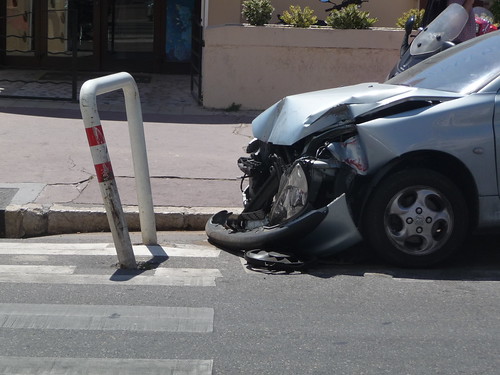How do we Avoid a Digital Dump in our Backseat?
Posted: November 4th, 2009 | No Comments »So yes, cities are all about difficulty. Most of the urban systems designs and scenarios out there are about to reduce their complexity adding layers of technologies and information (see The “Quants”, their Normalizations and their Abstractions). But we will never design complication out of the world, and certainly not with all the kind of instruments, practices and objects we develop. It tried to make that case in Embracing the Real World’s Messiness and in Sliding Friction: The Harmonious Jungle of Contemporary Cities. In their recent Situated Technology pamphlet, Julian Bleecker and Nicolas Nova argue on this quite nicely:
The idea of a ubiquitously computing urban setting where everything functions perfectly won’t work. We don’t even have to give the technical reasons why, we can rely on the history of failures as one often does, the things that are too often forgotten about but provide the richest set of materials for design and, despite this, are almost never considered.
At best the difficulties will shift. So is the design of urban systems about reducing complexity or make cities less intimidating? In an inspiring “melt up”, Adam Greenfield went off script and argued for the latter. Urban system are about giving more visibility to engage, to have citizens a little bit more prepared to understand the complexity and at best participate to the conversation that is the city. The design goals are both very humble and yet extremely challenging to reach. It will request us to disable the way we do design. That is, user-centered design is not enough and we have to go out and get dirty (e.g. practicing urban scouting, confronting practices or as Adam would say “Go beyond the safety nets of the practices we use”).
But even with perfect designs, the city has no guarantee of perfect outcome, citizens do appropriate the resources in an equal manner, some take advantage of the systems and have the ability to break the rules. So, as asked by an attendee to Adam’s talk, “Can we avoid a digital dump in our backseat?“. I have no real answer to that (great!) question, but it seriously questions the way that we contextualize, design and plan the integration of urban systems into contemporary urban environments. In the series of workshops on urban informatics Lift lab leads we often ask participants to “criticize” their scenarios/interventions with considerations on the (basic) implications on the different stakeholders (“win” and who “loses”?). One outcome of our resent workshop in Cornellà proved that it takes a long effort to go beyond the pretty and inclusive designs of urban system or the scenarios that discard the nasty elements that are integral part of urban life. It was not until the real end of the workshop that conflicting debates emerged.
Why do I blog this: near-future networked and digital cities are also about: Brussels’ digital garbage collectors going on strike, an alarming rate of digital syllogomania among the registered citizens of Sao Paolo, Google fined by the EU for their open data spillage of Amsterdam and Tokyo’s mayor who has to resign for sensor data smuggling. The contemporary Paris Ideal of Bicycle-Sharing Meeting Reality is yet only a weak signal.

Even with a perfect design, the city offers not guarantee of perfect outcomes

